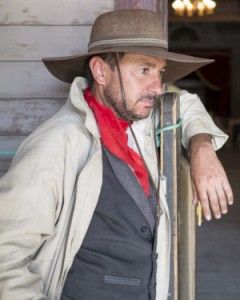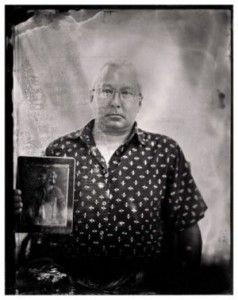The Idea of West
August 11 - December 30, 2018
Third Floor Galleries
The Idea of West redefines traditional views of the American West, drawing connections between the work of three contemporary photographers and the acclaimed work of Ansel Adams. The exhibition prompts viewers to reconsider their preconceptions of Western landscapes beyond the Mississippi River and the people who live in the region today.
Jeremiah Ariaz grew up in Kansas, a setting that fueled his fascination with the West as both a location and a state of mind. Through several photographic series, he has explored contradictions in factual and fictional depictions of the region, as well as the tension between the Western United States and the West that has been mythologized in the European imagination. In the Almeria region of southern Spain, Ariaz captured three cinema studios that served as the backdrop for Sergio Leone’s Dollarstrilogy and other Spaghetti Westerns. He later traveled to Germany to examine wildly popular re-enactments of Wild West shows based on the stories of German writer Karl May. Together the photographs create a landscape where fact and fantasy merge and specific locations become hard to pinpoint.
David Taylor received a 2008 Guggenheim fellowship to document all 276 obelisks that demarcate the U.S.-Mexico border west of El Paso/Juarez. Most were erected in the 1890s. What sounds like a dry conceptual project resulted in dramatic images that record the differences in the monuments, the changing landscape from east to west, and the implicit tensions created by borders. The entire boxed set of 276 border monument pictures was recently gifted to the Museum, and this project marks their Columbus debut. With Americans debating possible construction of a larger wall between the U.S. and Mexico, these images could not be more timely.
Will Wilson was born in San Francisco and raised in the Navajo Nation. His work combines 19th-century processes with digital technology to stimulate dialogue around “photographic exchange” as it pertains to Native Americans. Through a series of ongoing performances—under the general title Critical Indigenous Photograph Exchange (CIPX)—the artist engages his sitters in questions about identity, multiculturalism, and Americanness. Sitters keep the resulting tintype photograph, permitting Wilson to create a digital scan of the image to use for his own records and future artistic projects in exchange. This “photograph exchange” reflects the vibrancy of Native culture in contemporary portraits of Indians relocated to the West, helping to dispel some of the mythology surrounding this region and its inhabitants.
This exhibition is generously sponsored by Aflac.




